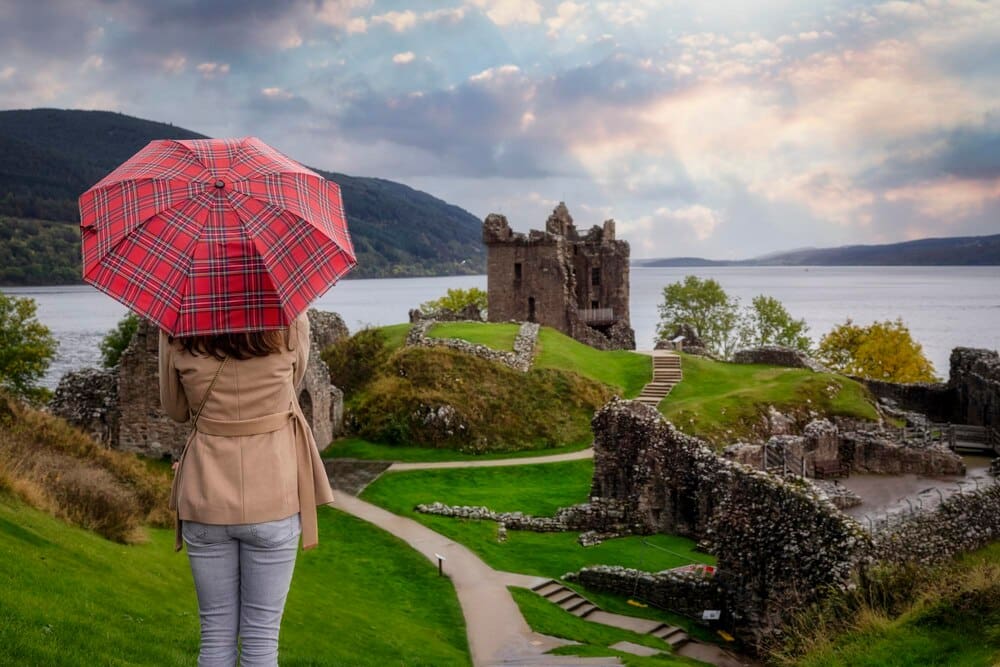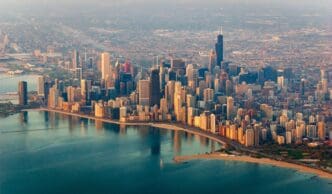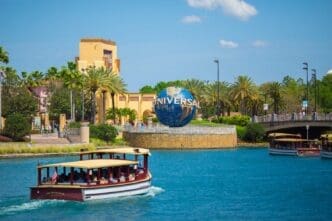For travelers dreaming of emerald landscapes and vibrant city life, a week-long journey through Ireland is a quintessential European adventure. Many assume this requires renting a car to navigate the country’s famed winding roads, but a rewarding, immersive, and surprisingly efficient 7-day Irish experience is entirely achievable without ever getting behind the wheel. By leveraging Ireland’s robust network of trains, buses, and expertly organized day tours, visitors can explore Dublin’s historic core, stand atop the majestic Cliffs of Moher, and soak in the bohemian spirit of Galway, all while saving money and avoiding the stress of driving on the left. This itinerary is designed for the independent traveler who wants to connect with the country on a local level, proving that the best of Ireland is accessible to everyone.
Why Go Car-Free in Ireland?
Opting to explore Ireland without a rental car presents a host of benefits that can genuinely enhance your trip. The most immediate advantage is financial. You’ll sidestep the high costs of car rental fees, expensive insurance (especially for international drivers), and the ever-fluctuating price of fuel.
Beyond the budget, you eliminate a significant source of travel stress. Ireland’s rural roads are notoriously narrow, winding, and often bordered by ancient stone walls, making for intimidating driving conditions for the uninitiated. Add the challenge of driving on the left side of the road and navigating roundabouts, and the freedom of a car can quickly feel like a burden.
Instead, traveling by public transport offers a more relaxing and scenic perspective. From the window of a train or coach, you are free to gaze at the passing patchwork of green fields and dramatic coastlines without worrying about the next turn. It also fosters a more authentic connection with the country, as you’ll be traveling alongside locals, observing daily life, and navigating the same systems they do.
Finally, it’s a more sustainable way to travel. By relying on shared modes of transport, you significantly reduce your carbon footprint, contributing to the preservation of the beautiful landscapes you’ve come to admire.
Your 7-Day Car-Free Irish Itinerary: A Hub-and-Spoke Model
This itinerary utilizes a “hub-and-spoke” strategy. You’ll establish bases in two key cities—Dublin and Galway—and use them as launchpads for exploring the surrounding regions. This approach minimizes the hassle of daily packing and hotel changes, allowing for a more settled and enjoyable pace.
Day 1: Arrival and Dublin’s Historic Heart
Upon landing at Dublin Airport (DUB), your car-free journey begins seamlessly. Multiple express bus services, like Airlink Express and Aircoach, offer frequent and direct routes into the city center. Purchase a ticket at the kiosk or from the driver and enjoy the ride as you get your first glimpse of the capital.
After checking into your accommodation, dedicate the afternoon to Dublin’s core. A walk to Trinity College to see the stunning Long Room library and the ancient Book of Kells is a perfect introduction to Ireland’s rich history. From there, meander through the cobbled lanes of the Temple Bar district, taking in the lively atmosphere before crossing the Ha’penny Bridge over the River Liffey for iconic photos.
Day 2: Dublin’s Stories and Spirits
Today is about diving into two of Dublin’s most compelling narratives: its fight for independence and its world-famous brewing heritage. Start your morning with a visit to Kilmainham Gaol, a former prison that is now a powerful museum chronicling Ireland’s path to freedom. It is absolutely essential to book your tickets online well in advance, as they sell out weeks ahead.
In the afternoon, choose your spirit. Head to the Guinness Storehouse for a multi-story, interactive experience culminating in a perfectly poured pint at the Gravity Bar, which offers 360-degree views of the city. Alternatively, visit the Jameson Distillery Bow St. for a more intimate, guided tour and whiskey tasting experience. In the evening, seek out a traditional Irish music session at a pub like The Cobblestone in Smithfield for an authentic cultural immersion.
Day 3: Day Trip to the Ancient East
Some of Ireland’s most profound historical sites are difficult to reach via standard public transport. This is where organized day tours become your best friend. Book a tour from Dublin to the Brú na Bóinne valley in County Meath, a UNESCO World Heritage Site.
These tours handle all transportation and logistics, allowing you to relax and absorb the history. You’ll visit Newgrange, a magnificent Stone Age passage tomb that is older than both Stonehenge and the Egyptian pyramids. Most tours also include a stop at the Hill of Tara, the ancient ceremonial and burial site that was the traditional seat of the High Kings of Ireland.
Day 4: Journey to the West – Dublin to Galway
It’s time to trade the capital for the cultural heart of Ireland’s west coast. The journey from Dublin to Galway is simple and scenic. Irish Rail offers comfortable and frequent train services from Heuston Station, while bus companies like GoBus and Citylink provide direct, non-stop coach services from the city center.
The two-and-a-half-hour journey will take you across the country’s midlands. Upon arrival in Galway, check into your hotel and head out to explore. The city is compact and wonderfully walkable. Start at Eyre Square, then make your way down the bustling Shop Street, filled with performers, pubs, and unique shops, until you reach the historic Spanish Arch and the rushing River Corrib.
Day 5: The Majestic Cliffs of Moher & The Burren
Today you will witness one of Ireland’s most breathtaking natural wonders. As with the Ancient East, the most efficient car-free method to see the Cliffs of Moher is via a day tour departing from Galway. Numerous operators offer full-day excursions that showcase the best of County Clare.
Your tour will take you along the Wild Atlantic Way to the iconic cliffs, which tower over 700 feet above the churning ocean. You’ll have ample time to walk along the cliff-top path and visit the visitor center. These tours also include a drive through the Burren, a unique and eerie karst landscape of limestone pavement, rare flora, and ancient dolmens. Many itineraries also feature a stop in the charming village of Doolin, famous for its traditional music.
Day 6: Return to Dublin and Coastal Charms
Enjoy a final Galwegian breakfast before catching a morning train or bus back to Dublin. After dropping your bags at your hotel, use Dublin’s local DART (Dublin Area Rapid Transit) train system for a quick coastal escape. This is a fantastic way to see a different side of the county.
You can take the northbound DART to the fishing village of Howth. Here, you can enjoy a stunning cliff walk that offers panoramic views of Dublin Bay, followed by a delicious meal of fresh fish and chips at one of the harborside eateries. Alternatively, head south on the DART to Dalkey, a picturesque and affluent village with its own castle and scenic coastline.
Day 7: Last Souvenirs and Departure
Use your final morning for any last-minute activities. You could explore the National Museum of Ireland – Archaeology, which houses incredible artifacts like Celtic gold and bog bodies, or do some souvenir shopping along Grafton Street.
When it’s time to leave, the same reliable airport buses will be waiting to take you from the city center directly to your terminal at Dublin Airport, concluding your seamless, car-free Irish adventure.
Essential Tools for Your Car-Free Journey
Navigating Ireland without a car is straightforward with the right resources. The Leap Visitor Card is an excellent investment for your time in Dublin, offering unlimited travel on city buses, trams (Luas), and the DART for a set period (1, 3, or 7 days).
For inter-city travel, always book train tickets on the Irish Rail website in advance for the best fares. For buses, compare options between Bus Éireann (the national bus service) and private operators like Citylink and GoBus, which often offer faster, more direct routes between major cities.
Perhaps the most critical tool is the organized day tour. For accessing remote attractions like the Ring of Kerry, the Dingle Peninsula, Newgrange, or the Cliffs of Moher, these tours are invaluable. They consolidate complex logistics into a single, affordable package, complete with expert commentary from a local guide.
Conclusion
A week in Ireland without a car is not a compromise; it’s a strategic choice that unlocks a different kind of travel experience. It’s a journey defined by scenic train rides, relaxing coach journeys, and the shared stories of a guided tour. By letting go of the driver’s seat, you are free to fully immerse yourself in the landscape, the culture, and the warm hospitality that makes Ireland so unforgettable, proving that the best adventures don’t always require a key.








